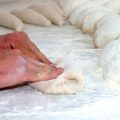Weclome to the homebaker’s guide to natural bread coloring. Winter is perfect time to slow our lives down, to set up some goals, to decrease all the hype , to take well deserved rest, and get grounded again for new adventures. But sometimes, the winter gets too greyish, monotonous, and blues-y. It’s when there might be no Sun for weeks and when all the green turns into pale memory and snow covers what might have survived the sharp cold.
Then, I know, it’s time to bring some joy and twists into bread baking. Today, we are going to talk about how to color your dough with natural colors.
Before we dive into colors, I would like to point out some tips and directions to consider in order to avoid surprises:
1. There are many ways of making your bread colorful. The most common ones I go for are:
– liquid (fresh vegetable or fruit juice)
– powder (dry spices and herbs or dried vegetable and fruit parts)
– pureé (mashed vegetables or fruits)
There are some other ways, like concentrated vegetable or fruit syrups or as @table_fable suggested on instagram adding (powder or herb) infused oils to the dough.
2. Color is also a flavor.
Keep in mind that with larger doses (of powder or liquid) you might reach the inedible limit very fast – imagine putting too much cocoa, cinnamon or charcoal powder into the dough. I have experienced this issue with using too much fresh red cabagge juice. The color was beautifully pink, but the taste was very strong – only for real red cabagge lovers (don’t say I didn’t warn you :)). One thing to consider is also the use of the final product – don’t use fruit teas to color the dough, if you know you’re going to eat the bread with savory.
3. Get most of the food coloring by examining it.
If you juice your vegetables, you will notice that some vegetable juices often turn brown very quickly – the juice oxidizes. There is no difference when adding the juice to the dough. The most common color intensity loss will occur with spinach, carrot, parsley, and beetroot juice. The solution to this is adding some acidic substance to the juice, like lemon juice, buttermilk or vinegar.
Also, if not sure what the juice color intensity will be in the dough, check how translucent the liquid looks. The more transparent the liquid, the less intensive the color in the final product.
Note: this post will be regularly updated with new experiments and findings about dough coloring. Feel free to join the fun here on or my Instagram and Facebook accounts.
Yellow
– turmeric powder (for the bread on the photo below I put 1 tsp per 250 g of flour) or turmeric juice
– safrron
– egg yolks (applicable for sweet doughs)
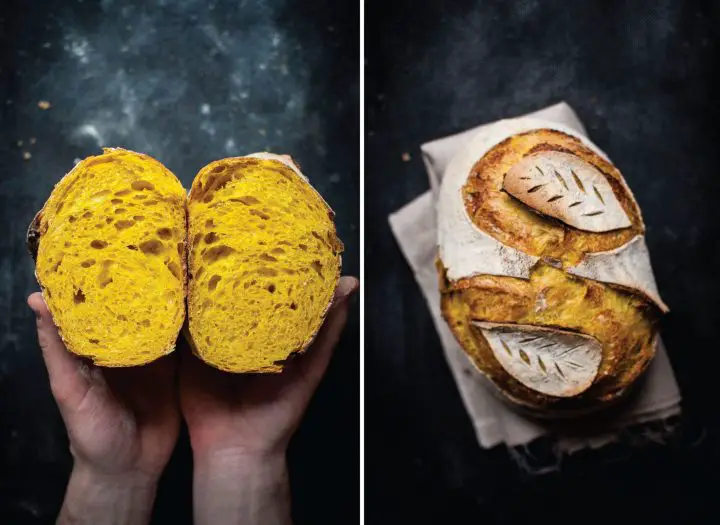
Coloured with turmeric powder.
Orange
– carrot juice or powder
– pumpkin juice or pureé (see the recipe here)
– paprika powder
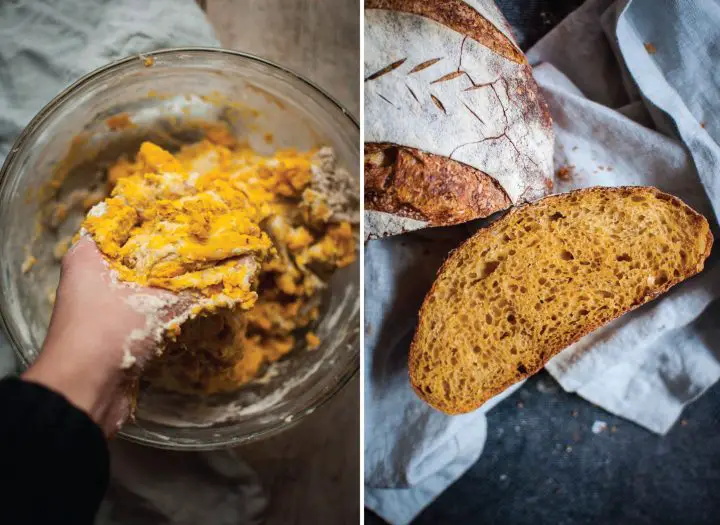
Left coloured with pumpkin puree, right coloured with fresh carrots juice.
Red
– hibiscus
– beetroot juice or powder
Pink
– raspberries
– red cabbage juice (experiment with cooked cabbage juice or adding a little bit of baking soda for blue)
– purple potato
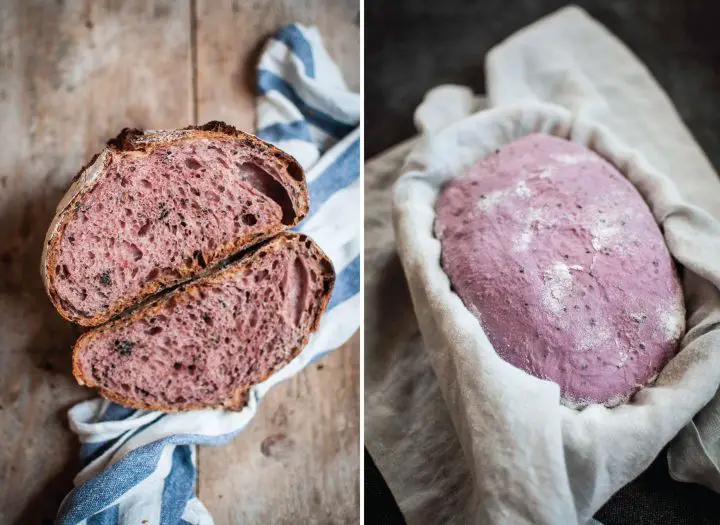
Coloured with fresh red cabagge juice.
Purple
– purple carrots
– blueberries
– purple potatoes
– walnuts (walnuts contain tannins which give the dough greyish-purple-lavender hue)
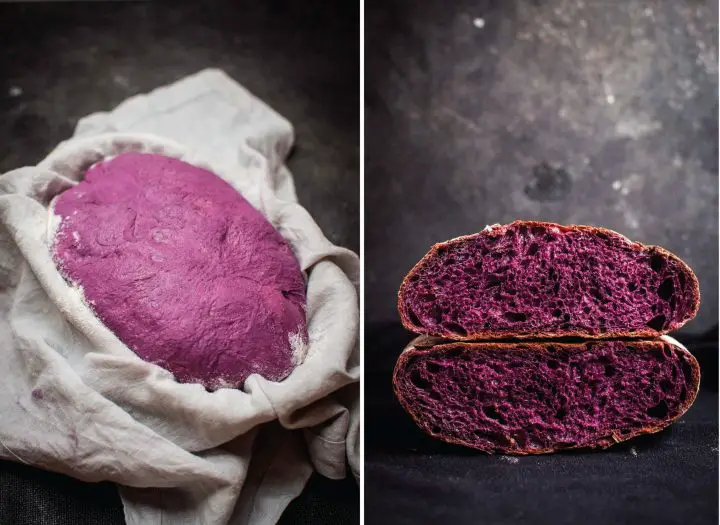
Coloured with fresh purple carrots juice.
Green
– spinach
– matcha powder
– vegetable chlorophyll
– algae like spirulina and chlorella powder
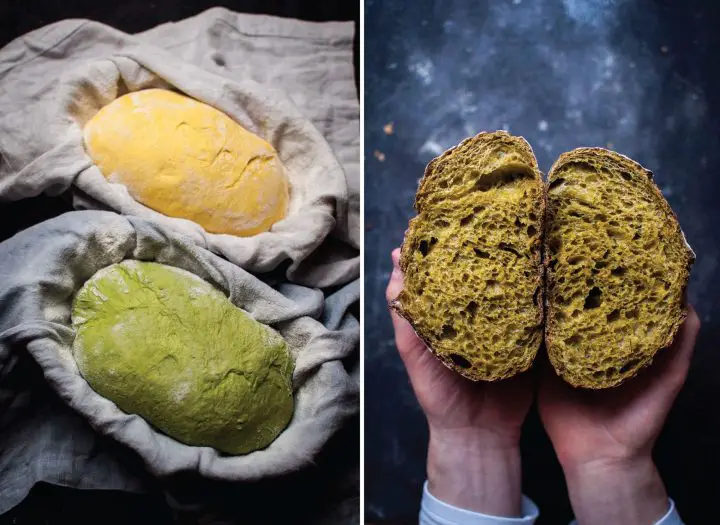
Coloured with fresh spinach juice.
Blue
This is the only color I haven’t tried experimenting with. One of the reasons might be that blue isn’t really the color you would connect to food and eating (unicorn cakes don’t count!). In food psychology, blue is considered as appetite suppressant and it is therefore very advisable to use blue at meals when wanting to lose weight (using blue plates for example). In nature, blue food is very rare, actually, I don’t remember any at the moment (except for some flowers and I don’t consider blueberries blue :)).
I’m planning to experiment with blue in next weeks. Wish me luck!
Brown (rye malt, cacao)
– rye/barley malt (see the recipe here)
– cocoa powder
– cinnamon
– coffee
You can check a great tutorial for zebra effect (right photo below) on this link. Try experimenting with different color combinations, it’s fun.
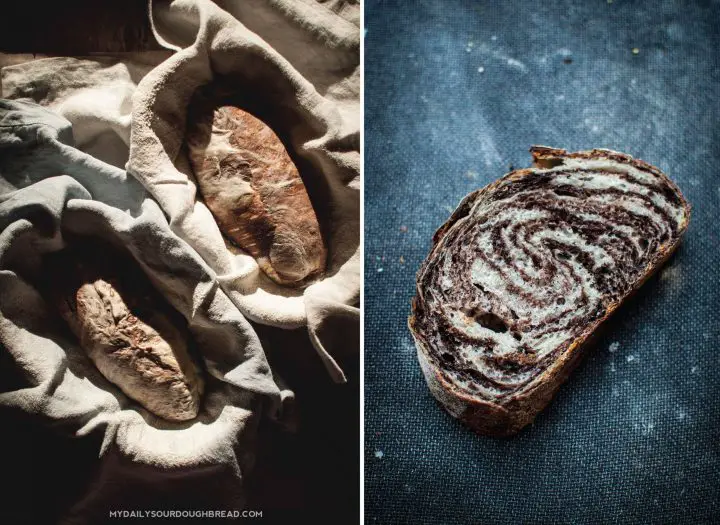
Coloured with cacao powder.
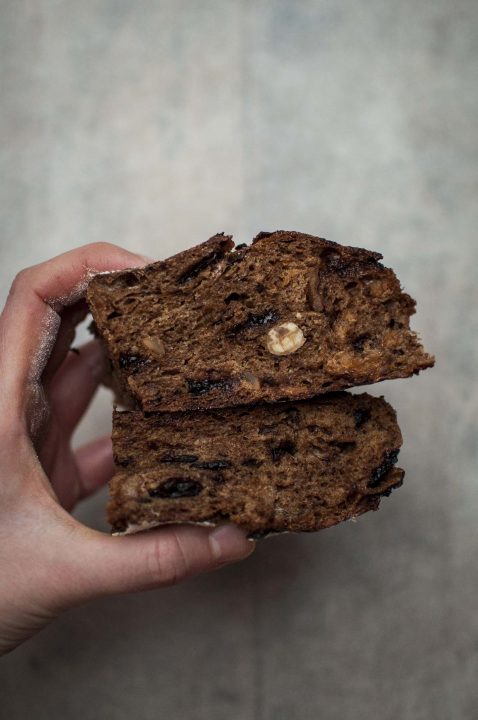
Coloured with rye malt.
Black / grey
Black is, same as blue, relatively unappealing color when it comes to food. My experience with sharing black bread is doubt mixed with curiosity at first, and excitement after trying it.
– activated charcoal powder (see the photo below, get the recipe here)
– squid ink
– large quantities of raw cocoa powder
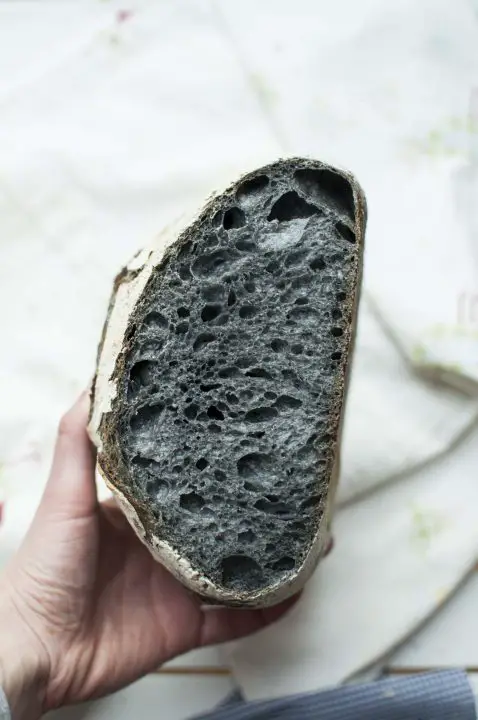
Coloured with charcoal powder.
Have you tried bread coloring?
What is your favorite color?
What is your best experience and best tip for getting intense colors?
I would love to hear from you, let me know in a comment below, I’m looking forward! 🙂

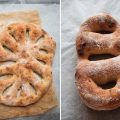
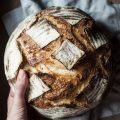
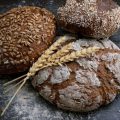
![Autolyse Bread: Mixing Flour The Right Way [Simple Guide] 12 Autolyse bread: mixing flour the right way [simple guide]](https://www.mydailysourdoughbread.com/wp-content/uploads/2022/09/CD-blog-images-2022-09-28T221858.458-120x120.jpg)
